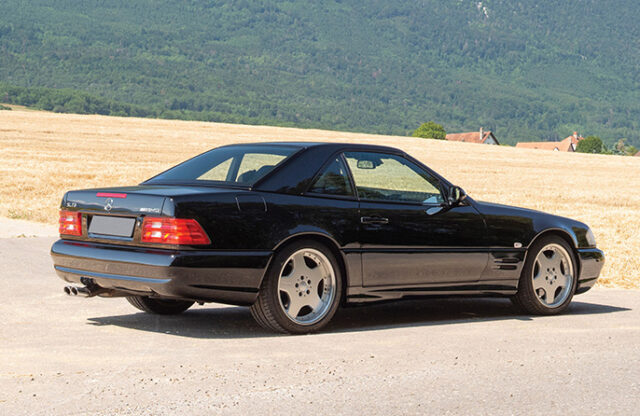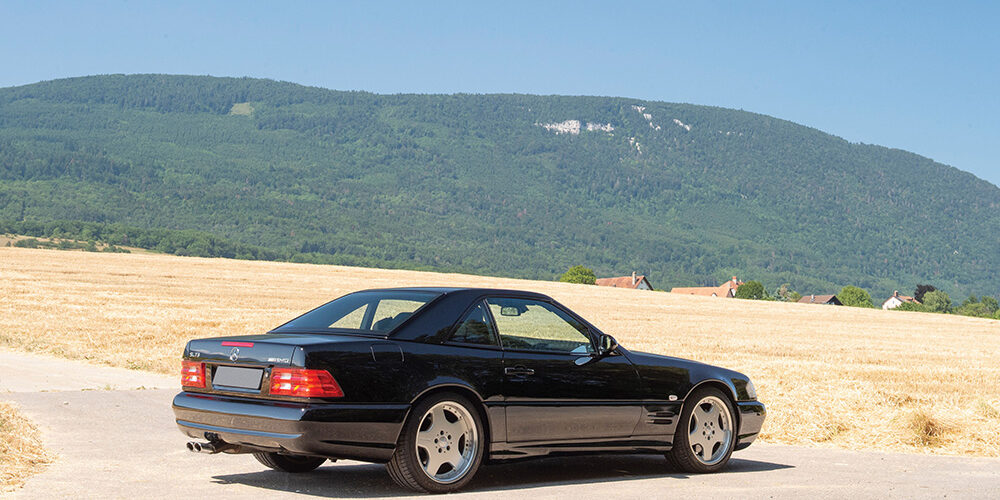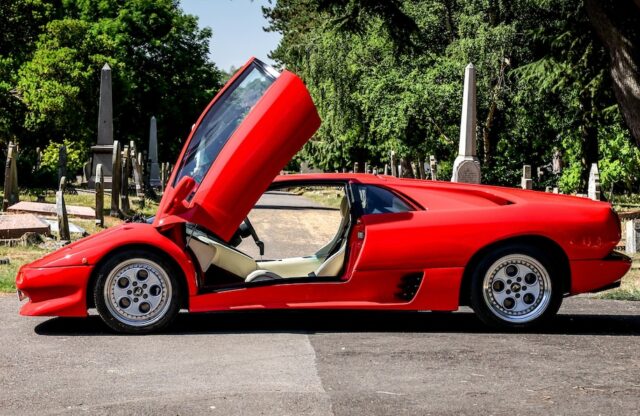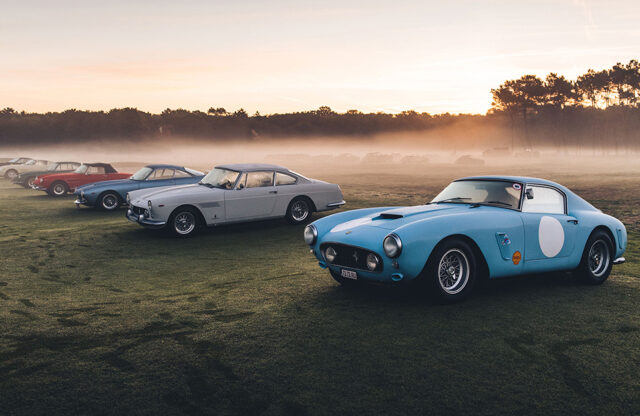WORDS: DAVID LILLYWHITE AND NATHAN CHADWICK | PHOTOS: BONHAMS, BROAD ARROW, GOODING & CO. AND RM SOTHEBY’S
This was the auction battle that everyone in the market has been talking about. Not just the well publicised RM Sotheby’s move away from the established Amelia Island event to its own new ModaMiami concours 385 miles down the Florida east coast, but also relative newcomer Broad Arrow’s biggest sale yet.
There’s no doubt that splitting the locations adversely affected the attendance of all the sales, particularly with the Broad Arrow and RM Sotheby’s auctions running at the same times over the same two days. Thankfully, Broad Arrow and Gooding & Co. had agreed not to clash timetables, which at least helped – and the Broad Arrow and RM Sotheby’s results don’t seem to have been particularly affected by the timings, either.
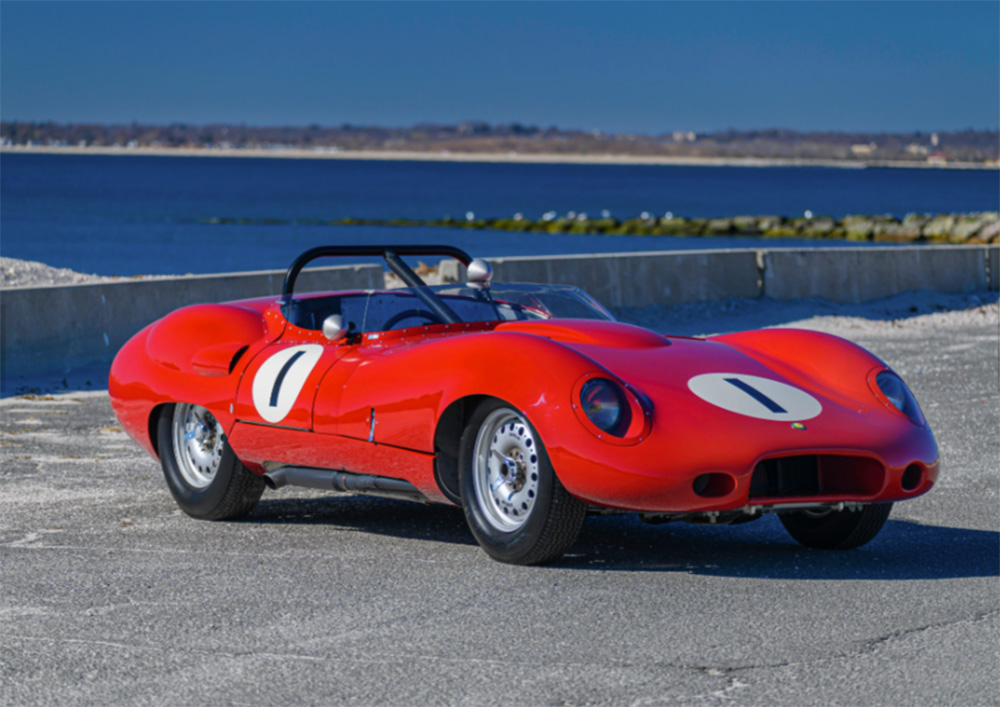
The loser in all this was Bonhams, though. With a relatively poor listing of cars, and running too early in the long weekend’s schedule to attract a big crowd, its sales tent was unusually lacking in atmosphere – and the results really reflected that. It’s interesting, too, that of the top three sales at Bonhams, one car was assigned by former CEO Malcolm Barber, whose move to RM Sotheby’s was announced only days before the event, and another by former group head of motoring James Knight, who moved to a consultancy role in April 2021.
Gooding & Co., on the other hand, was looking in much better shape. Although a similar distance off the main site as Bonhams, the sales room was packed and the atmosphere vibrant, with the popular double act of David Gooding and Charlie Ross keeping the bids moving and the audience engaged. The cheer that went up for the remarkable one-family-owned-from-new 1903 Mercedes 60HP when it achieved a total of $12.105m summed up both the love for that car and the affection enthusiasts feel for Gooding & Co.
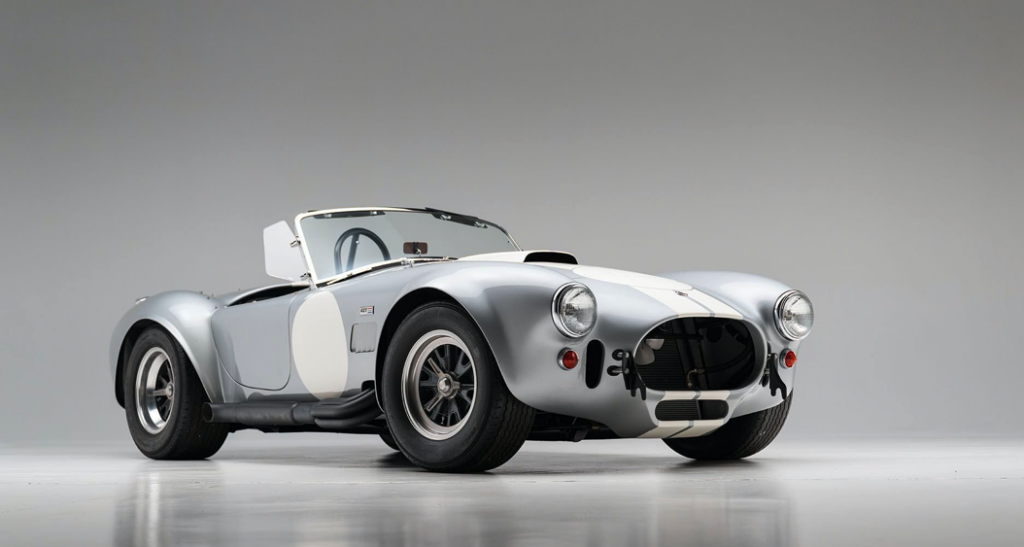
At the Ritz-Carlton, where The Amelia event is held, Broad Arrow built on last year’s first Amelia sale with a well set-out sales room and strong consignments of cars (plus a few motorcycles). Despite – or perhaps because of – miserable weather outside, the atmosphere in the room was electric, and auctioneer Lydia Fenet held the audience brilliantly. It was undoubtedly the star turn of all the Florida auctions.
Starting at exactly the same times on both days, the RM Sotheby’s sale was similarly packed, but in a much smaller, less comfortable room. Sales were strong, but auctioneer Mike Shackleton didn’t hold the room on the first day as well as Fenet or Ross, although the second day’s sale felt more vibrant.
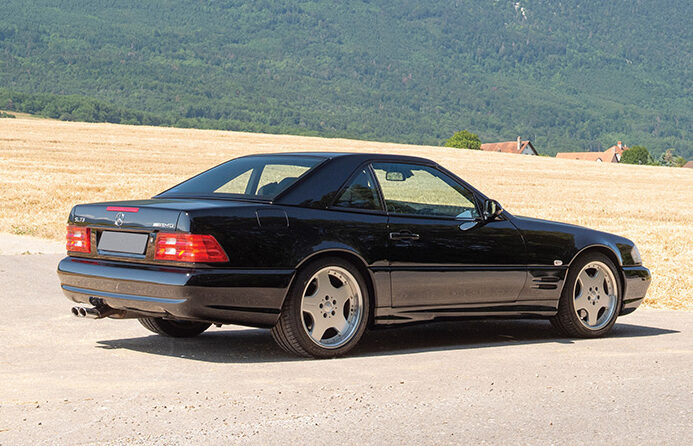
As for the trends we can deduce from the sales, it’s clear that cars of the 1980s, ’90s and early 2000s are growing ever stronger, and there’s still a strong call for recent hypercars, although the number with only delivery mileage on is depressing. The popularity of up-to-1999 Mercedes-Benz models has resulted in ‘pre-merger AMGs’ being one of the catchphrases of current-day sales – with Broad Arrow’s lot list naturally following up on last year’s W124 successes with a varied selection of models.
None of these W124s was anywhere near as rare as the two internet-breaking cars from last year – instead, the truly rare pre-merger AMGs could be found at RM Sotheby’s, and that’s where the big money went. The R129 SL73 pictured above sold for $610k against a $250k-$450k estimate, while a 1988 Mercedes-Benz 300 TE 6.0 AMG S124 estate car, nicknamed the The Mallet and one of two such cars built, sold for $467k against a $300k-$400k estimate. Meanwhile, a 1990 Mercedes-Benz 560 SEC AMG 6.0 Wide-Body sold for $582,500 against a $500k-$700k estimate.
Overall, there were more cars that seemed to fall just shy of low estimate and just above, but other than Bonhams, sell-through rates appeared to be high. What were your highlights of the weekend?
Bonhams

Following the withdrawal of a 918 Weissach Spyder, it fell to another hypercar Porsche to lead Bonhams’ 82 further lots. This 2004 Carrera GT was originally delivered to Washington, US, for Bill Neukom of Microsoft and San Francisco Giants fame. He optioned the car with XT Bucket Seats and Porsche Online Pro CD Radio, and covered 1800 miles in around 14 years, before selling it to the second owner. With a little over 4700 miles on the clock, it was estimated at $1.425m-$1.55m, yet it didn’t sale.
This set the trend for Bonhams – of the ten leading cars by pre-sale estimate, only one car sold; notable among these were a 1932 Stutz DV-32 Four-Passenger Speedster (estimated at between $650k and $800k), a 1959 Lister-Chevrolet ‘Costin’ Sports Racing Two-Seater (estimated at between $800k and $1m) and a 1929 Bentley Speed Six Le Mans Replica Tourer (estimated at between $900k and $1.2m).

Of the Bonhams top ten, the only car to find a new home (at the time of writing) was this, the reconstructed 1904 Gordon Bennett Napier L48 ‘Samson’ Racing Car. The original version was the first to exceed 100mph in the US, setting the record 117 years ago in Florida, with Brit Arthur MacDonald setting a world record of 104.651mph at Ormond Beach on January 25, 1905. The car returned to Ormond Beach a year later, with Walter Thomas Clifford Earp winning the 100-mile world record by 50 seconds, despite a tyre blow-out that left him racing on just a rim. Dorothy Levitt set the Women’s World Land Speed Record driving the L48 in the same year, an achievement that wasn’t bested until 1963.
Napier eventually sold the car for scrap, and both engines were sold for use in speedboats. The first motor was discovered in a Cornwall Pottery factory in Melbourne, Australia, and brought back to life by Alan ‘Bob’ Hawker Chamberlain with the help of Anthony Heal and Derek Grosmark, with the rest of the car produced using photos and plans for wooden casting patterns. It first ran again in 1982, and has been seen at events such as the Goodwood Festival of Speed since. Estimated at between $900k and $1.1m, it sold for $742k.

Bonhams had better news with this 2007 Honda NSX-R GT. Purchased as a ‘body-in-white’ from Honda’s racing department in 2007, it was built for circuit racing to celebrate 20 years of the Spoon Sports company racing in Japan. Spoon CEO Tatsuru Ichishima chose the NSX-R as the basis for such a special project, with the 2008 Macau Grand Prix set as a deadline for the car’s debut. Although it was originally set up with a naturally aspirated engine, once it had finished racing it was fitted with a 3.0-litre C30 engine block and a turbocharger, to deliver 440bhp.
The preparation for the Macau race saw the car lightened, stiffened and fitted with a roll cage; its final weight was 980kg thanks to lightweight body panels. The doors and dashboard were constructed from carbonfibre, while the bodywork was honed by Spoon for extra downforce. The results were third in class and sixth place overall at the 2008 Macau GP Road Sport Challenge, with Ichishima behind the wheel. Estimated at between $240k and $280k, it burst through that ceiling to $368k.
Broad Arrow
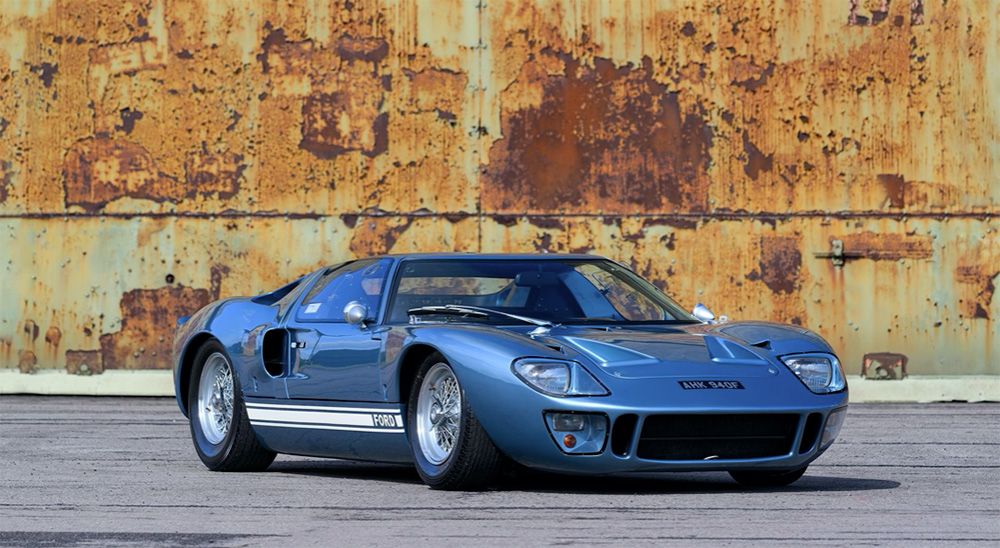
This 1967 Ford GT40, one of 31 Mk1 GT40 road cars built, was among 20 on Ford’s Promotion and Disposal Program – essentially the Blue Oval’s press promotion team. As such, it was a much-storied model during its time with the UK press fleet, with the car used in promotional images with Graham Hill. It was later owned by the likes of Bruce Ropner, marque specialist John Etheridge and Anthony Bamford, in addition to being performance tested by Motor magazine. Last year it had a starring role at Magneto‘s own Concours on Savile Row. Against an estimate of between $4m and $5m, Broad Arrow hammered it home for $4.405m.
Other Detroit-powered highlights included the 1954 Dodge Firearrow IV, which sold for $1.1m against a $1.5m-$2m estimate, a 1957 Ford Thunderbird F-Code that sold for $263,200 against a $225k-$275k estimate, and a 1958 Cadillac Series 62, which sold for $229,600 against a $150k-$200k estimate.
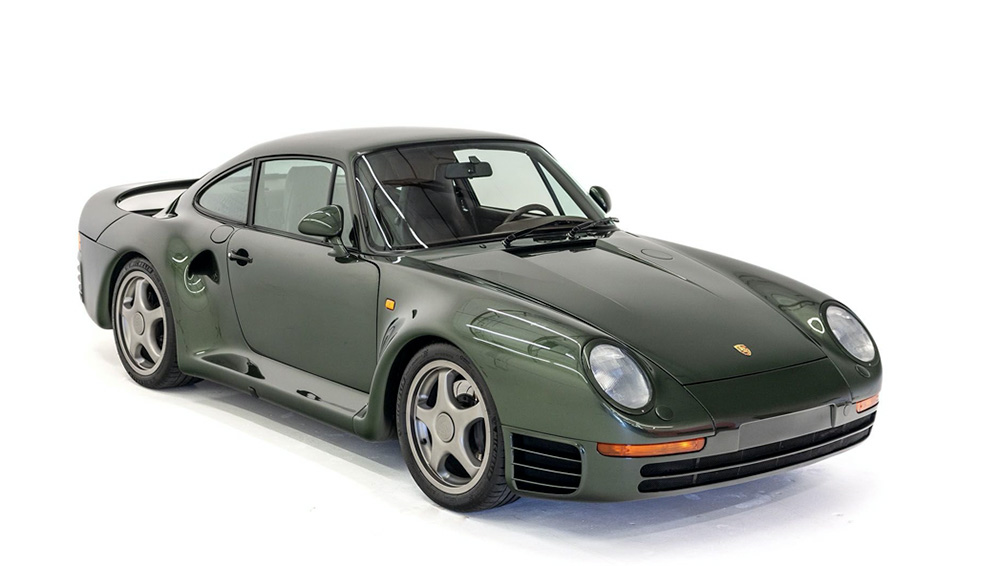
One of the most fascinating stories from among the packed Broad Arrow listings was this 1988 Porsche 959. It was originally purchased by the Nissan Motor Company via Belgian distributor D’Ieteren Brothers, and disassembled by its engineers for analysis. The fruits of this labour came via the Nissan Skyline GT-R R32 and its Advanced Total Traction Engineering System for All-Terrain and Electronic Torque Split, which came to Europe in GT racing and pinched the Spa 24 Hours from under the European sports car elite, dominating touring car racing with it. Nissan never registered the 959, and when the car’s research duties were done it was sold, and eventually came to the US. In 2019, the then-owner handed it over to Bruce Canepa to be converted to ‘959 SC Reimagined’ specification. After 4000 hours and hundreds of thousands of dollars, power swelled from 438bhp to 800bhp. Against an estimate of between $3.25m and $3.75m, it sold for $3.085m.
Other 1980s and 1990s supercar highlights included a 1982 Lancia 037 Stradale, which sold for $588k against a $500k-$600k estimate, a 1997 Porsche 911 Turbo S, which sold for $544k against a $475k-$525k estimate, and a 1993 Jaguar XJ220, which sold for $527,500 against a $550k-$650k estimate.
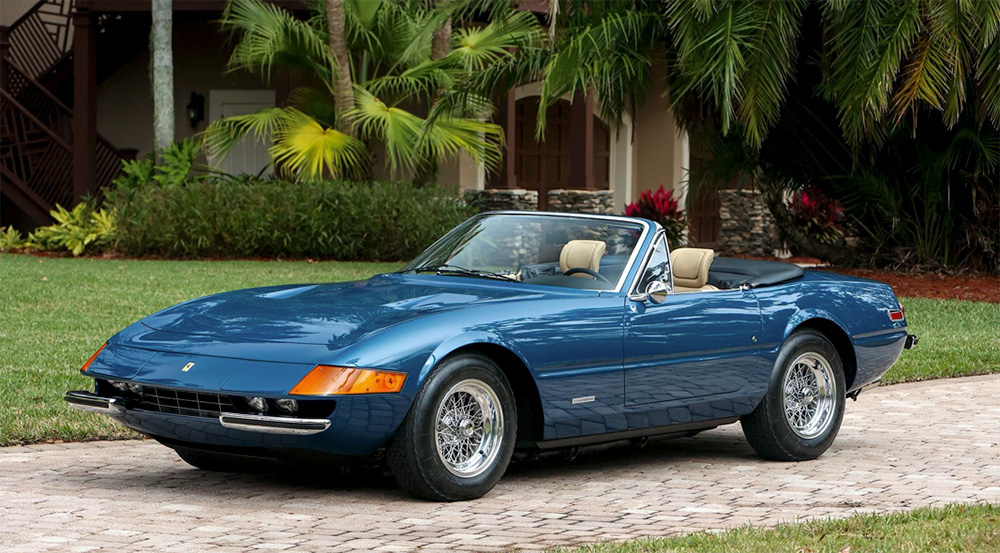
This 1973 Ferrari 365 GTB/4 Daytona Spyder was the 92nd of 121 factory-built Spyders, with Classiche Red Book certification thanks to matching-numbers chassis, engine, transaxle and body. Offered for sale after a slew of concours appearances, it wore its original Blu Dino Metallic over beige Connolly leather combination well, and sold for an estimate-busting $3.305m against a $2.8m-$3.2m prediction.
Other Ferrari highlights included a 1968 Dino 206 GT that sold for $610k against an estimate of between $600k and $750k, a 1974 365 GT4 BB that sold for $335k against an estimate of $350k-$400k, and a 1972 365 GTC/4 that sold for $196k against a $240k-$280k estimate.
Gooding & Company
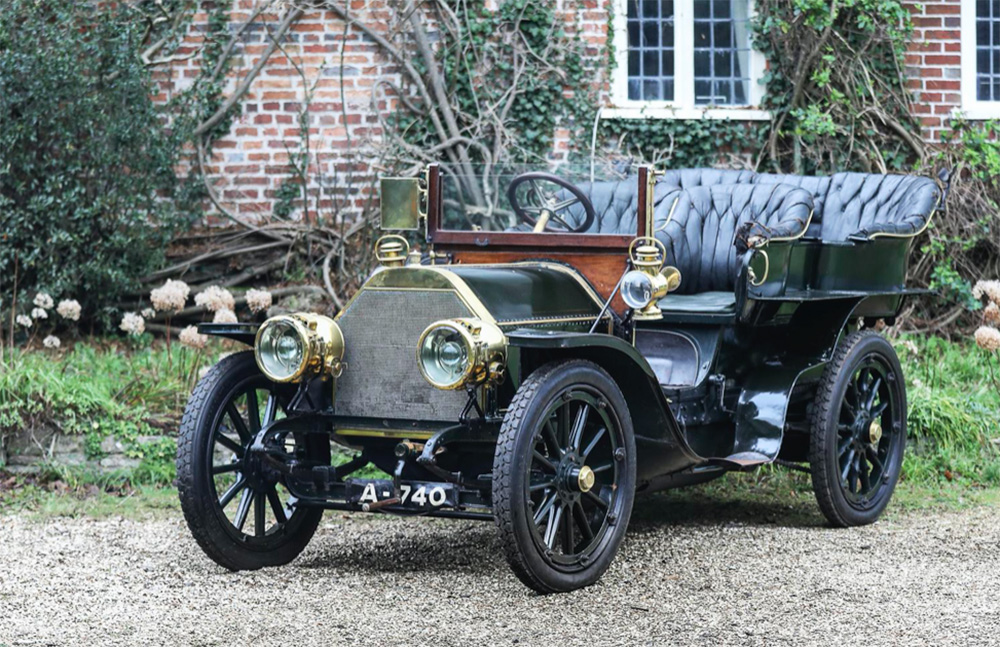
The highest-valued car across the four Miami auctions on pre-sale estimate didn’t disappoint. This 1903 Mercedes-Simplex 60HP ‘Roi des Belges’ was first ordered to the UK by Alfred Harmsworth, otherwise known as Viscount Northcliffe, the founder of the Daily Mail and the Daily Mirror newspapers. First delivered to Nice, France, so that German racing driver Hermann Braun could set a new speed record, it would later act as a reserve team car for Ireland’s Gordon Bennett Cup. It then won the Ballybannon Hillclimb, with E Campbell Muir behind the wheel. Harmsworth himself would use the 60HP for the next decade, before passing it on to his son Alfred.
The family retained the car at their home until the mid-1950s, when it was put on display by the Beaulieu Motor Museum. It remained there as part of a featured display until 2023, although still owned by the Harmsworth family. Offered for sale for the first time in 121 years, it was estimated at $10m or more, and eventually sold for $12.105m – a world record for both pre-1930 cars and all ‘antique’ vehicles.
Other pre-war highlights included a 1931 Duesenberg Model J Disappearing-Top Convertible Coupe that sold for $2.645m against a $2.75m-$3.5m estimate, a 1938 Bugatti Type 57C Atalante that sold for $2.26m against a $2.4m-$2.8m estimate, and a 1929 Bentley 4½ Litre Le Mans Sports Tourer, which sold for $1.545m against a $1.8m-$2.4m estimate.
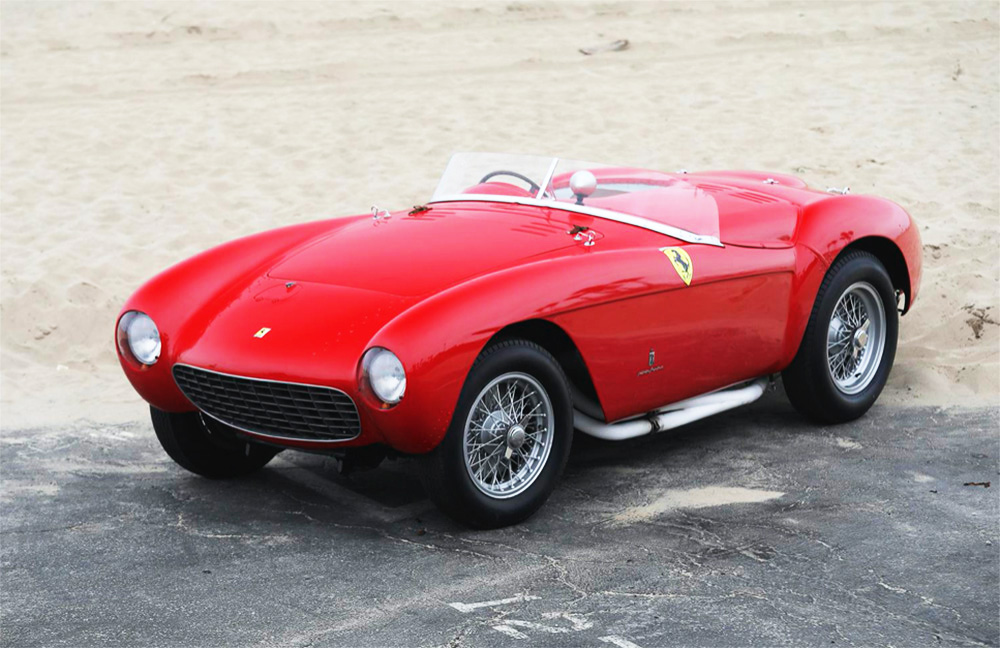
This 1954 Ferrari 500 Mondial Series I Spyder, one of 14 bodied by Pinin Farina out of a total of 22 constructed, is chassis 0434 MD. It was first delivered to Jacques Swaters’ Garage Francorchamps in Belgium, for Dutch racing driver Herman Roosdorp. Competition life soon followed, with the Grand Prix of Sports Cars at Spa Francorchamps in May and fifth place being the result. A second-place finish followed at Zaandvoort, before a couple of class wins later that year.
The Mondial was then sold to fellow Dutchman Simon Maasland, for his son Hans to drive. Hans Maasland and Dries Van der Lof took the Ferrari to first in class at Zandvoort in 1955, a feat it would repeat a year later. Offered for sale in Germany in 1956, the Mondial eventually came to the US via Chuck Fee in 1964, and was sold to Asa Clark. In 1965 it entered the collection of Ed Niles, who would buy and sell the car several times over the next decade. It would later grace the collections of the likes of Erich Traber, Peter Sachs, Bill Jacobs and David Sydorick. Since 2018, it has been in a Los Angeles-based collection. Estimated at between $4m and $5m, it sold for $3.995m.
Other Ferrari highlights included a garage-find 1967 Ferrari 275 GTB/4, originally owned by racing driver Jo Siffert and offered for sale for the first time in 50 years; estimated at between $3m and $3.5m, it sold for $2.92m. Meanwhile, one of 121 factory-built Ferrari 365 GTB/4 Daytona Spyders, originally sold to North American Racing Team driver John ‘Buck’ Fulp Jr, sold for $3.635m against a $2.5m-$3m estimate, and the 1960 Ferrari 250 GT Series II Cabriolet that starred in the 1964 Pink Panther film, but is now in need of restoration, sold for $940k against a $1m-$1.3m estimate.

This Porsche RS61 was, as befits the name, built for the 1961 season. One of 14 built for that year, chassis 718-076 was original supplied to Austrian racing driver Hermann Müller, who used it in circuit races and hillclimbs for two years. In 1963 he had the car updated with a Kamm tail and a livery evoking the Austrian national flag. Later that year he sold the car to Dr Dawie S Gous, a South African racer, who promptly dominated the 1964 South African Sports Car Championship. Part-way through 1965, Gous sold the car to fellow South African Clive van Buuren, who won the South African Six Hours with it, as well as achieved several other high-profile results.
In 1967, it was sold to Stan Wesselink, and competed in Historic events. It came to the US in the late 1970s via California Porsche-Audi Inc of San Francisco; by this point its bodywork had been modified to remain competitive, and it had been updated with a 911 steering rack, disc brakes from a 356 Carrera 2 and a larger, more powerful Type 574/5 four-cam motor that still sits in the engine bay today. By 1987, 718-076 was in the hands of Jeffrey Keiner, who restored the car, before selling it to A Dano Davis of the Brumos Collection in Florida. Stanley Gold acquired the car in the mid-2000s, before passing it on to the vendor in 2013. Against an estimate of between $4m and $5m, it sold for $3.1m.
Other Porsche and Porsche-related highlights included a 1973 911 Carrera RS 2.7 that sold for $1.985m against a $2m-$2.5m estimate, a 2019 935 that sold for $1,517,500 against a $1.5m-$1.75m estimate, and a 964 Carrera 4 Singer Classic Study that sold for $1.16m against a $1.1m-$1.3m estimate.
RM Sotheby’s
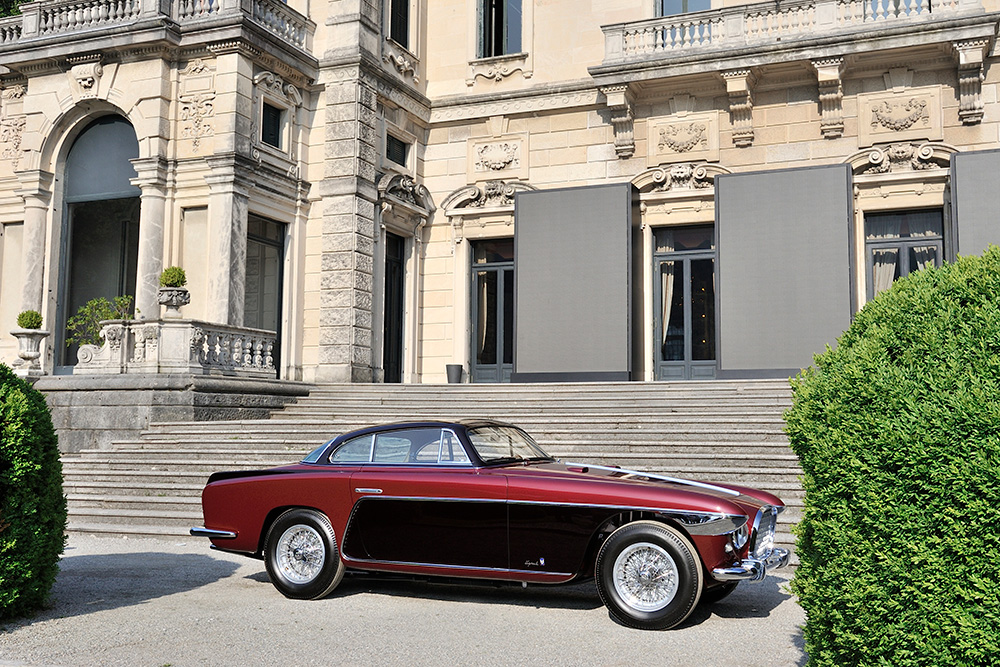
RM Sotheby’s led its sale with this 1953 Ferrari 250 Europa by Vignale, chassis 0295 EU. Produced for the 1953 Paris Motor Show, it was the first of 22 Europas built, and the first of just two to feature the 3.0-litre Colombo V12. It’s also one of three Vignale-bodied cars, and once its show duties were over it was sold to its first owner, Robert Teakle of Detroit, Michigan. It would have several owners over the next 18 years, before entering the 37-year-long stewardship of Gilbert Walton of Danville, California. He sold it to Brian Hoyt of Perfect Reflections, California, in 2008. The car was given a five-year restoration, with engine work from Patrick Ottis. It later starred at concours in the US and Europe, including the Concorso d’Eleganza Villa d’Este and Pebble Beach, and has been Ferrari Classiche certified. Estimated at between $4.5m to $5.5m, it sold for $4.295m.
Other Ferrari highlights included the ninth of 14 365 California Spyders, which didn’t sell but is available for $4m against a $4m-$4.5m estimate, a 1990 European-spec non-cat, non-adjust F40 with less than 1200km on the clock that sold for $3.36m against a $2.8m-$3.4m estimate, and a US-spec F12tdf, which sold for $1,242,500 against a $1.1m-$1.3m estimate.
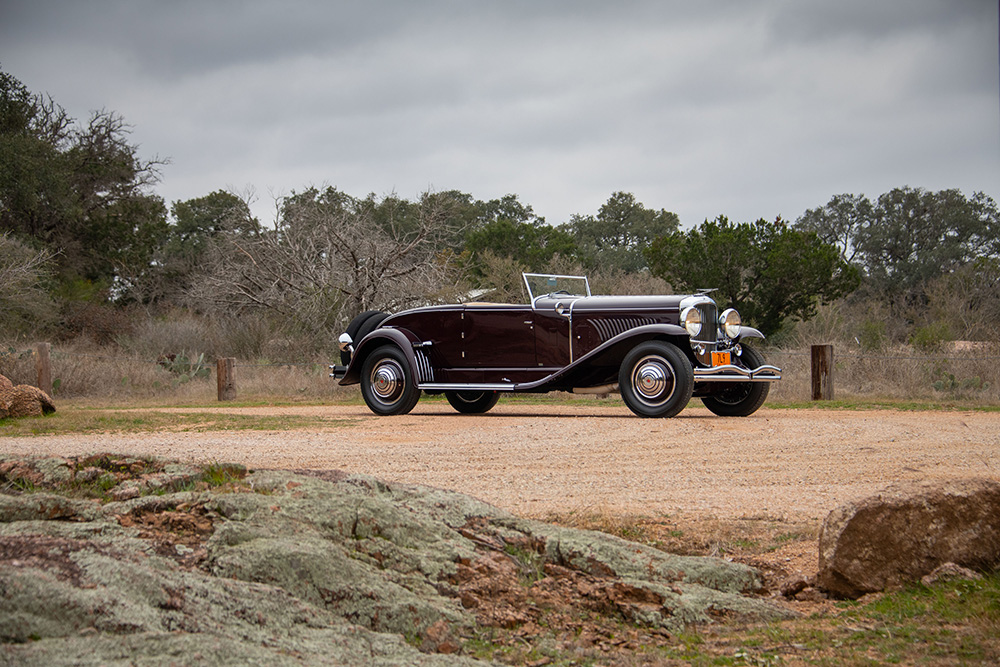
This 1930 Duesenberg Model J Disappearing Top Convertible Coupe by Murphy is one of two surviving Disappearing Top examples with original rear-mounted spares. It was ordered by Esther Fiske Hammond, the grand-daughter of the CEO of the Jordan Marsh department store chain, for her spirited drives between Montecito and Pasadena. She kept it until 1934, when she sold it to her neighbour – Margorie Butler, heiress to the Butler Paper Company. She kept it for just a year, however, selling it to her chauffeur’s son, John Foray, for $500 as a favour to his father for his faithful service. He would sell the car to Duesenberg enthusiast Ken Griffen in Chicago in 1938.
It was then acquired by Charles Allen, a prominent local radio announcer, in 1953; during this time, the original engine was replaced. After several more owners, it was bought by Richard Burdick of San Marcos, Texas, who would put it on display at the Central Texas Museum of Automotive History. In 2017 it was bought by Paul Petrovich of California, and sent to Randy Ema Inc for a full restoration. Indeed, this would be Randy’s last restoration before retirement. Shown only twice since the restoration’s completion, it sold for $3.855m against a $3.5m to $4m estimate.
RM struggled with its other big-ticket pre-war cars, with a 1929 Duesenberg Model J Sweep Panel Dual-Cowl Phaeton by LeBaron (estimated at between $2.65m and $2.85m), an ex-Iraqi Royal Family 1930 Mercedes-Benz 770 K Pullman Cabriolet by Voll & Ruhrbeck (estimated at between $2.5m and $3m) and a 1932 Packard Deluxe Eight Individual Custom Convertible Victoria by Dietrich (estimated at between $1.3m and $1.5m) failing to find homes. However, a uniquely designed 1939 Mercedes-Benz 540 K Special Cabriolet with Pebble Beach Best of Show history sold for $2.205m against an estimate of between $2m and $2.4m.
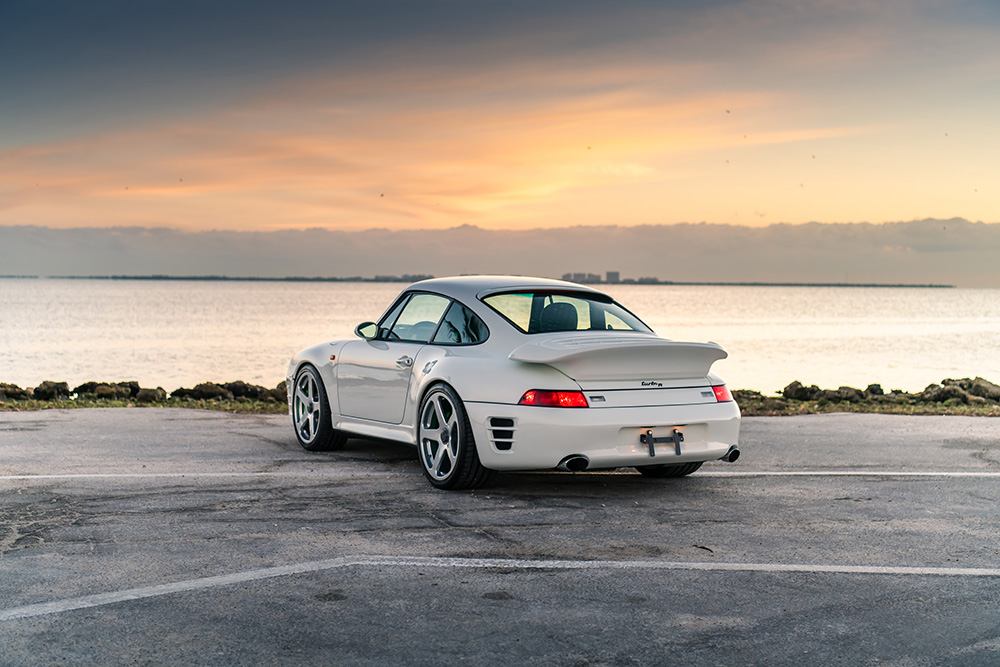
The upper echelons of the hypercar market provided a few results that were a departure from form. After several McLaren P1 sales, RM’s 2015 example failed to sell, while a rare opportunity to buy the track-focused Nürburgring Package version of the already rare Lexus LFA (one of 25 US cars) wasn’t taken up at a $1.55m-$1.95m estimate. A ‘normal’ LFA also didn’t fly at between $800k and $900k estimated, and neither did a 1996 Honda NSX-R find a new home, with a $450k-$550k estimate. Japanese supercars did not seem to be flavour of this month.
There was, however, better news for extreme Porsches. RM’s black 2005 Carrera GT sold for $1.721m against a $1.65m-$1.85m estimate, while a 1998 RUF Turbo R (pictured above) sold for $1,517,500 against a $1.5m-$1.8m estimate, and a 1996 911 Remastered by Gunther Werks sold for $1,022,500 against a $1m-$1.3m estimate. The 1998 RUF Turbo R was one of just 15 produced, and four specified with all-wheel drive.
